Documentos
Orgyen Dorje Chang
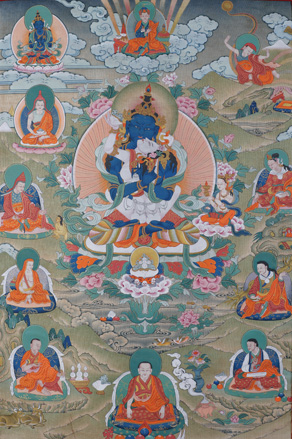 Guru Orgyen Dorje Chang (Skt. Guru Oddiyāna Vajradhara; Tib. གུ་རུ་ཨོ་རྒྱན་རྡོ་རྗེ་འཆང་, Wyl. gu ru o rgyan rdo rje ‘chang) é uma das Oito Manifestações de Guru Rinpoche. Este aspecto de Guru Rinpocheé algumas vezes visualizado no centro do campo de mérito na tradição Nyingma. Orgyen Dorje Chang está na forma sambhogakaya, com seus ornamentos específicos; segurando um vajra e um sino, suas pernas estão na postura vajra completa. Ele abraça sua consorte, Vajravarahi Branca.
Guru Orgyen Dorje Chang (Skt. Guru Oddiyāna Vajradhara; Tib. གུ་རུ་ཨོ་རྒྱན་རྡོ་རྗེ་འཆང་, Wyl. gu ru o rgyan rdo rje ‘chang) é uma das Oito Manifestações de Guru Rinpoche. Este aspecto de Guru Rinpocheé algumas vezes visualizado no centro do campo de mérito na tradição Nyingma. Orgyen Dorje Chang está na forma sambhogakaya, com seus ornamentos específicos; segurando um vajra e um sino, suas pernas estão na postura vajra completa. Ele abraça sua consorte, Vajravarahi Branca.
Dorje Drolo
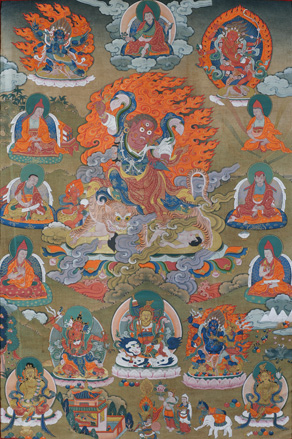 Guru Dorje Drolö (Tib. གུ་རུ་རྡོ་རྗེ་གྲོ་ལོད་, Wyl. gu ru rdo rje gro lod) é uma das Oito Manifestações de Guru Ginpoche — Guru Rinpoche na forma irada, montado em uma tigresa prenhe.
Guru Dorje Drolö (Tib. གུ་རུ་རྡོ་རྗེ་གྲོ་ལོད་, Wyl. gu ru rdo rje gro lod) é uma das Oito Manifestações de Guru Ginpoche — Guru Rinpoche na forma irada, montado em uma tigresa prenhe.
Ele assumiu esta manifestação em Paro Taktsang no Butão para trazer as deidades locais e guardiões sob o seu controle.
Do livro “A Great Treasure of Blessings”, page 34:
Dorje Drolo: wrathful emanation of Padmasambhava and most often associated with the set of Eight Main Manifestations and the life story of Guru Rinpoche.
He also functions as a guruyoga practice/meditational deity.
For the purpose of subduing daemons and spirits of Tibet and the surrounding Himalayan regions Padmasambhava, at the thirteen mountain retreats each known as the Tiger’s Den (tagtsang), appeared as the wrathful Dorje Drolo.
Há muitos locais onde existem impressões do pé esquerdo de Guru Rinpoche nas rochas.
As Oito Manifestatações de Padmasambhava pertencem a classe de ensinamentos de tesouros revelados (Tib.: ter ma) de acordo com a tradição Nyingma do Budismo Tibetano.
“In the experience of great bliss fiercely blazing with wrathful power, maroon in colour, holding a vajra and kila, the two feet dancing expressively atop a tigress; homage to Dorje Drollo.”
(Nyingma Liturgical verse).
At thirteen different places called ‘Tiger’s Lair’, Taktsang, Guru Rinpoche manifested in “the terrifying wrathful form of crazy wisdom”,
binding worldly spirits under oath to protect the terma treasures and serve the Dharma. Then he is known as Dorje Drolö, ‘Wild Wrathful Vajra’.
Em treze lugares diferentes chamados ‘Tiger’s Lai’, Taktsang, Guru Rinpoche manifestou-se na” terrível forma irada de sabedoria louca” atando espíritos mundanos sob juramento para proteger os tesouros terma e servir ao Dharma. Desta forma ele é conhecido como Dorje Drolö, ‘Irado e Selvagem Vajra’.
[products_slider title=”” per_page=”12″ featured=”no” latest=”no” best_sellers=”no” on_sale=”no” orderby=”menu_order” order=”desc” layout=”default” category=”guru-rinpoche, ” ]Senge Dradrok
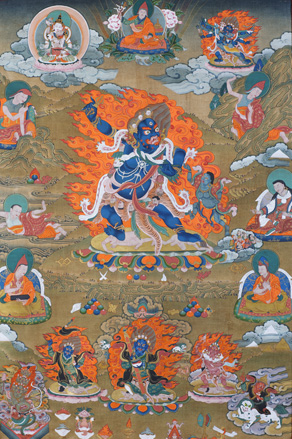 Guru Sengé Dradrok (Tib. གུ་རུ་སེང་གེ་སྒྲ་སྒྲོག་, Wyl. gu ru seng ge sgra sgrogs; Eng. ‘O Rugido do Leão’) — uma das oito manigestações de Guru Rinpoche.
Guru Sengé Dradrok (Tib. གུ་རུ་སེང་གེ་སྒྲ་སྒྲོག་, Wyl. gu ru seng ge sgra sgrogs; Eng. ‘O Rugido do Leão’) — uma das oito manigestações de Guru Rinpoche.
Do livro “A Great Treasure of Blessings”, page 30:
[products_slider title=”” per_page=”12″ featured=”no” latest=”no” best_sellers=”no” on_sale=”no” orderby=”menu_order” order=”desc” layout=”default” category=”guru-rinpoche, ” ]Guru Rinpoche challenged and defeated five hundred upholders of wrong views in debate at Bodhgaya.
He reversed their magic with the aid of a wrathful mantra given him by the lion-faced dakini Marajita.
Guru Senge Dradrok subdues the irrational energies of black magic, curses & hexes, dispelling bad omens, weird vibes, nightmares, or anything that might be too far out there.
In Orissa, he destroyed a lingam with a bolt from his fingertips, ending animal sacrifices in the area.
He symbolizes the power to neutralize both visible and invisible beings and to avert natural disasters.
The wrathful display of Guru ‘Lion’s Roar’ is totally grounded in love and compassion for all sentient beings.
He is known as Sengé Dradok, ‘The Lion’s Roar’.
Pema Gyalpo
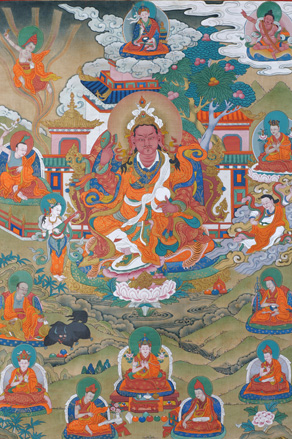 Guru Pema Gyalpo (Skt. Padmaraja; གུ་རུ་པདྨ་རྒྱལ་པོ་, Wyl. gu ru pad+ma rgyal po; ‘Rei Lótus’) — uma das Oito Manifestações de Guru Rinpoche. Nesta visualização, Guru Rinpoche é descrito como um príncipe jovem, sua perna esquerda está dobrada e a perna direita flexionada, seu pé descansa sobre um lótus recentemente aberto, com sua mão direita mão esquerda ele segura um espelho (melong).
Guru Pema Gyalpo (Skt. Padmaraja; གུ་རུ་པདྨ་རྒྱལ་པོ་, Wyl. gu ru pad+ma rgyal po; ‘Rei Lótus’) — uma das Oito Manifestações de Guru Rinpoche. Nesta visualização, Guru Rinpoche é descrito como um príncipe jovem, sua perna esquerda está dobrada e a perna direita flexionada, seu pé descansa sobre um lótus recentemente aberto, com sua mão direita mão esquerda ele segura um espelho (melong).
Do livro “A Great Treasure of Blessings”, pages 29–30:
[products_slider title=”” per_page=”12″ featured=”no” latest=”no” best_sellers=”no” on_sale=”no” orderby=”menu_order” order=”desc” layout=”default” category=”livros, ” ]Guru Rinpoche remained in Oddiyana for thirteen years to teach, as a result of which the king, queen and many others attained realization and the rainbow body. Then he was known as Pema Gyalpo, ‘The Lotus King’.
Loden Chokse
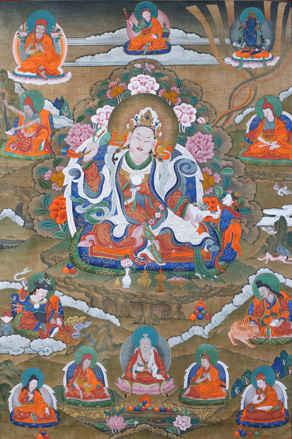 Guru Loden Chokse (Tib. གུ་རུ་བློ་ལྡན་མཆོག་སྲེད་, Wyl. gu ru blo ldan mchog sred; “O Sábio apanhador do sublime”) – uma das oito Manifestações de Guru Rinpoche.
Guru Loden Chokse (Tib. གུ་རུ་བློ་ལྡན་མཆོག་སྲེད་, Wyl. gu ru blo ldan mchog sred; “O Sábio apanhador do sublime”) – uma das oito Manifestações de Guru Rinpoche.
Do livro “A Great Treasure of Blessings’, page 28:
Guru Rinpoche would master a teaching the first time he encountered it, and experienced visions of deities without needing to practise. Attaining the first vidyadhara level, the stage of ‘the vidyadhara level of maturation’ or ‘vidyadhara with karmic residue’, he was known as Loden Choksé, ‘Wise Seeker of the Sublime’.
Guru Rinpoche dominava cada ensinamento na primeira vez em que o encontrava e experimentava visões de deidades sem necessidade de praticar. Alcançando o primeiro nível de vidyadhara, o estágio do “nível de maturação vidyadhara” ou “vidyadhara com resíduo cármico”.
[products_slider title=”” per_page=”12″ featured=”no” latest=”no” best_sellers=”no” on_sale=”no” orderby=”menu_order” order=”desc” layout=”default” category=”livros, ” ]Padmasambhava
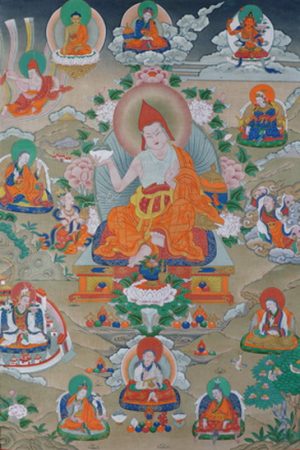 Guru Padmasambhava (Skt.; Tib. གུ་རུ་པདྨ་འབྱུང་གནས་, Wyl. gu ru pad+ma ‘byung gnas), uma das Oito Manifestações de Guru Rinpoche.
Guru Padmasambhava (Skt.; Tib. གུ་རུ་པདྨ་འབྱུང་གནས་, Wyl. gu ru pad+ma ‘byung gnas), uma das Oito Manifestações de Guru Rinpoche.
O nome Padmasambhava também é comunmente atribuido iconograficamente a todos os aspectos de Guru Rinpoche.
Nesta visualização, Guru Padmasambhava é descrito como um pandita usando robes monásticos, segurnado uma kapala em sua mão direita e executando o mudra vitarka en sua mão esquerda.
From the heart of Buddha Amitabha, light rays radiated into the bud of a lotus on Danakosha lake.
Upon its ripening, appeared an amazing child, adorned with the major and minor marks sitting atop a thousand petaled lotus
Glorious Guru Padmasambhava, please protect and guide me until I attain complete enlightenment.
Inseparable from the Primordial Buddha Samantabhadra, the all-pervading Lord of the three jewels of
Buddha, Dharma and Sangha,
and master of the three roots of
lama, yidam, and dakini,
the glorious Guru Padmasambhava should be definitively understood as being the essence of Buddha Amitabha.
In order to propagate and spread the teachings of the Dharma in general, and particularly the secret mantra and Dzogchen teachings, he appears to every being of the three thousand billion world systems in a form to benefit them according to their personal karmic vision.
In this way Guru Padmasambhava has countless unimaginable biographies, one biography for each being.
Although that is the definitive biography of Guru Padmasambhava, the historical figure Guru Padmasambhava’s life-story as known to the common disciples is as follows.
When the time for Guru Rinpoche to liberate the beings of this world approached, on the tenth day of the sixth month of the Monkey year, he appeared miraculously in the blossom of a lotus in the lake called “Ocean of Milk” in South West Odiyana, which is also known as Lake Danakosha located on the Afghanistan-Pakistan frontier.
[products_slider title=”” per_page=”12″ featured=”no” latest=”no” best_sellers=”no” on_sale=”no” orderby=”menu_order” order=”desc” layout=”default” category=”guru-rinpoche, ” ]Nyima Ozer
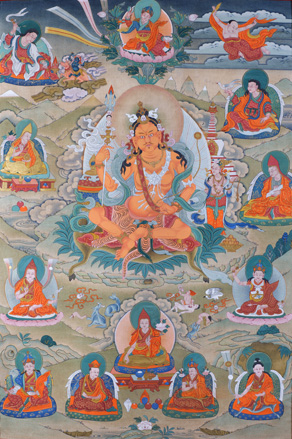 Guru Nyima Özer (Tib. གུ་རུ་ཉི་མ་འོད་ཟེར་, Wyl. gu ru nyi ma ‘od zer; Eng. ‘Raios de Sol’) — uma das Oito Manifestações de Guru Rinpoche.
Guru Nyima Özer (Tib. གུ་རུ་ཉི་མ་འོད་ཟེར་, Wyl. gu ru nyi ma ‘od zer; Eng. ‘Raios de Sol’) — uma das Oito Manifestações de Guru Rinpoche.
Do livro “A Great Treasure of Blessings”, page 30:
[products_slider title=”” per_page=”12″ featured=”no” latest=”no” best_sellers=”no” on_sale=”no” orderby=”menu_order” order=”desc” layout=”default” category=”livros, ” ]Guru Rinpoche manifested as a number of great siddhas, such as Saroruha — the master who revealed the Hevajra Tantra—as well as Saraha, Dombiheruka, Virupa, and Krishnacharin. Guru Nyima Odzer is associated with mystical experiences and spiritual realization. He travelled widely visiting the eight great charnel grounds, the 32 major power places, wilderness areas and even cities. Guru ‘Sun Ray’ discovers the secrets of the inner structure of the body-mind through direct knowledge of the winds, drops and channels (rLung, Thig-le, rTsa) which ripens together with the awakening of primordial wisdom. All experience is reflected in these three dynamic elements.
In charnel grounds like Kuladzokpa, ‘Perfected in Body’, he taught the secret mantra to dakinis and made outer and inner spirits into protectors of the Dharma. He was then known as Nyima Özer, ‘Rays of the Sun’.
Shakya Senge
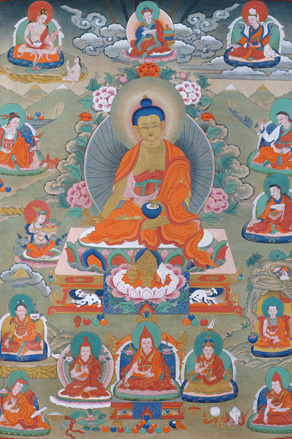 Guru Shakya Senge (Tib. གུ་རུ་ཤཱཀྱ་སེང་གེ་, Wyl. gu ru shAkya seng ge; Eng. ‘Leão dos Shakyas’) — uma das Oito Manifestações de Guru Rinpoche. Nesta forma, ele é descruto como um Buddha, com hábitos monásticos, segurando uma tigela de mendicância na mão esqueda, e na mão direita, um vajra.
Guru Shakya Senge (Tib. གུ་རུ་ཤཱཀྱ་སེང་གེ་, Wyl. gu ru shAkya seng ge; Eng. ‘Leão dos Shakyas’) — uma das Oito Manifestações de Guru Rinpoche. Nesta forma, ele é descruto como um Buddha, com hábitos monásticos, segurando uma tigela de mendicância na mão esqueda, e na mão direita, um vajra.
Do livro “A Great Treasure of Blessings”, pages 27–28:
At ‘the Vajra Seat’ in Bodhgaya, Guru Rinpoche displayed miracles, acknowledging he was a self-manifested buddha. Although he was a fully enlightened buddha, he appeared as a nirmanakaya manifestation to tame and teach beings in this age, and so for their benefit he acted as if receiving teachings, accomplishing the practice and passing through the various stages of spiritual realization, one by one. Some accounts tell how in Vajrasana, he was ordained by the Buddha’s closest disciple, Ananda. Others say he took ordination from Prabhahasti in Zahor and was given the name Shakya Sengé, ‘Lion of the Shakyas’.
[products_slider title=”” per_page=”12″ featured=”no” latest=”no” best_sellers=”no” on_sale=”no” orderby=”menu_order” order=”desc” layout=”default” category=”guru-rinpoche, ” ]Tsokye Dorje
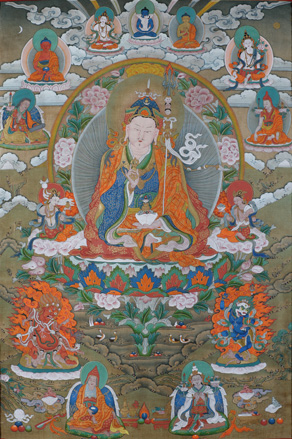
Guru Tsokye Dorje com Mandarava a sua direita e Yeshe Tsogyal a sua esquerda.
Guru Tsokye Dorje (Skt. Saroruhavajra; Tib. གུ་རུ་མཚོ་སྐྱེས་རྡོ་རྗེ་; Wyl. gu ru mtsho skyes rdo rje; ‘O Vajra nacido do Lótus’, Pema Jungne) — uma das Oito Manifestações de Guru Rinpoche.
Uma das características desta forma pacífica de Guru Rinpoche é sua visualização segurando um vajra em seu coração.
Do livro “A Great Treasure of Blessings”, pages 25–26:
-
In the north-western part of the land of Oddiyana, on an island in the lake of Dhanakosha, the blessings of all the buddhas took shape in the form of a multi-coloured lotus flower. Moved with compassion at the suffering of sentient beings, the Buddha Amitabha sent out from his heart a golden vajra, marked with the syllable SRIH, which descended into the lotus blossom. It transformed into an exquisitely beautiful eight-year old child.
-
[products_slider title=”” per_page=”12″ featured=”no” latest=”no” best_sellers=”no” on_sale=”no” orderby=”menu_order” order=”desc” layout=”default” category=”guru-rinpoche, ” ]As Guru Rinpoche was born within the lotus flower upon the waters of the lake, the dakinis called out to him from their hearts, and their call spontaneously became the Vajra Guru mantra. So this mantra is his heart mantra, his life core, his heart essence, and to recite it is to invoke his very being. He is known as Tsokye Dorje, ‘Lake-born Vajra’.
8 Emanações de Guru Rinpoche
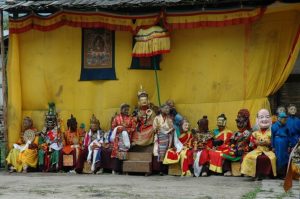 Guru Rinpoche é um ser altamente realizado que manifestou-se, durante sua vida, em muitas formas milagrosas para beneficiar os seres e o mundo em suas diversas formas e capacidades de compreenção.
Guru Rinpoche é um ser altamente realizado que manifestou-se, durante sua vida, em muitas formas milagrosas para beneficiar os seres e o mundo em suas diversas formas e capacidades de compreenção.
Também, no livro Pema Kathang, um tesoude de Orgyen Lingpa, cada uma das emanações correspondem a uma das oito direções.
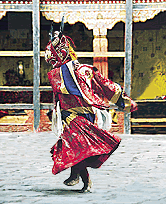 Isto é celebrado, em especial, no Tibete, Sikkim e Butão com a direções a dança de Guru Tshengye (Tib. གུ་རུ་མཚན་བརྒྱད་, guru tsen gyé), onde yogues mascarados reverenciam cada emanação:
Isto é celebrado, em especial, no Tibete, Sikkim e Butão com a direções a dança de Guru Tshengye (Tib. གུ་རུ་མཚན་བརྒྱད་, guru tsen gyé), onde yogues mascarados reverenciam cada emanação:
1. Guru Tshokye Dorji (nascimento) (Tib. གུ་རུ་མཚོ་སྐྱེས་རྡོ་རྗེ་, Wyl. gu ru mtsho skyes rdo rje): “O Vajra que nasceu do lago”, quando Guru Rinpoche milagrosamente nasceu do lago Dhanakosha e tornou-se filho do rei Indra Bodhi, esse era o nome pelo qual Guru Rinpoche era conhecido.
2. Guru Shakya Singye (ordination) (Tib. གུ་རུ་ཤཱཀྱ་སེང་གེ་, Wyl. gu ru shAkya seng ge): quando Guru Rinpoche deixou o Prazeres do palácio para buscar o caminho do Dharma na caverna de Maratika, ele era conhecido por esse nome.
3. Guru Loden Chogsed (mestre dos ensinamentos) (Tib. གུ་རུ་བློ་ལྡན་མཆོག་སྲེད་, Wyl. gu ru blo ldan mchog sred): quando Guru Rinpoche obteve o domínio de todas as instruções dos Sutras e Tantras nos lugares sagrados da Índia, ele era conhecido por isso nome.
4. Guru Padmasambhava (estabelecendo o budhismo no Tibet) (Tib. གུ་རུ་པདྨ་འབྱུང་གནས་, Guru Pema Jungné, Wyl. gu ru pad+ma ‘byung gnas): quando Guru Rinpoche tomou para sí a consorte Lhacham Mandarava, seu pai, o rei de Zahor se ofendeu e incendiou-o. No entanto, o fogo milagrosamente transformou-se em um lago de Lotus. Devido a esta façanha, Guru Rinpoche era conhecido Por este nome.
5. Guru Pema Gyalpo (reinado) (Tib. གུ་རུ་པདྨ་རྒྱལ་པོ་, gu ru padma rgyal po): quando Guru Rinpoche retornou oara o domínio de Ogyen, os ministros do mal tentaram
matá-lo juntament com seus pais. No entanto, eles foram errotados e posteriormente convertidos ao budismo. Guru Rinpoche era conhecido por esse nome como uma marca de sua realização por esse feito.
6. Guru Nima Oezer (subjugando espíritos demoníacos) ( Tib. གུ་རུ་ཉི་མ་འོད་ཟེར་, Wyl. gu ru nyi ma ‘od zer): quando Guru Rinpoche perambulou através dos oito grandes campos de cremação, incluindo o lendário Sewa Tshal, dando ensinamentos a Dakinis e domesticando as forças do mal, ele era conhecido por esse nome.
7. Guru Singye Dradrog (subjugando obstáculos ao dharma), Tib. གུ་རུ་སེང་གེ་སྒྲ་སྒྲོག་, Wyl. gu ru seng ge sgra sgrog: quando Guru Rinpoche prevaleceu sobre forças opostas ao Dharma no “Centro do mundo”, Bodh Gaya, realizando Feitos milagrosos, ele era conhecido por esse nome.
8. Guru Dorje Drolo (encondendo therma, (atando espíritos sob juramento), Tib. གུ་རུ་རྡོ་རྗེ་གྲོ་ལོད་, Wyl. gu ru rdo rje gro lod): quando Guru Rinpoche voou nas costas de uma tigresa de Singye Dzong, em Kurtoe, para Tagtshang, em Paro, escondendo objetos sagrados e prevalecendo sobre as forças do mal, ele era conhecido por esse nome.
[products_slider title=”” per_page=”12″ featured=”no” latest=”no” best_sellers=”no” on_sale=”no” orderby=”menu_order” order=”desc” layout=”default” category=”guru-dragpo, guru-rinpoche, phurba, vajrakilaya, ” ]

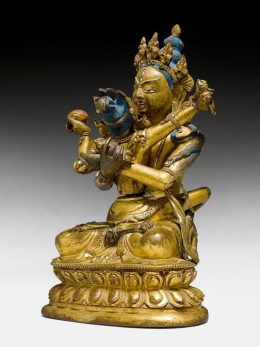
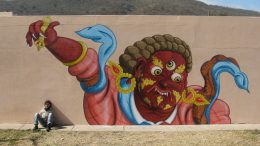
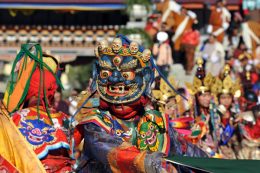
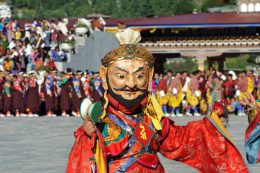
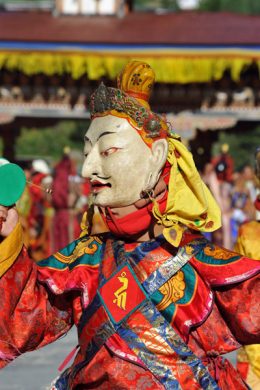
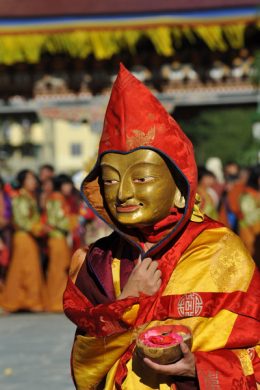
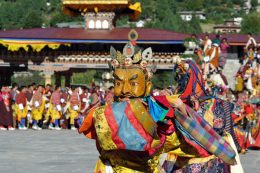
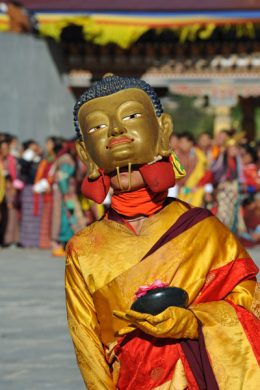
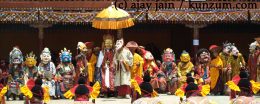
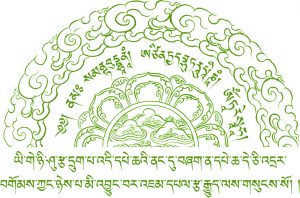
 Cintamani - Meditação e Arte - Copyright 2020 - Todos os direitos reservados.
Cintamani - Meditação e Arte - Copyright 2020 - Todos os direitos reservados.